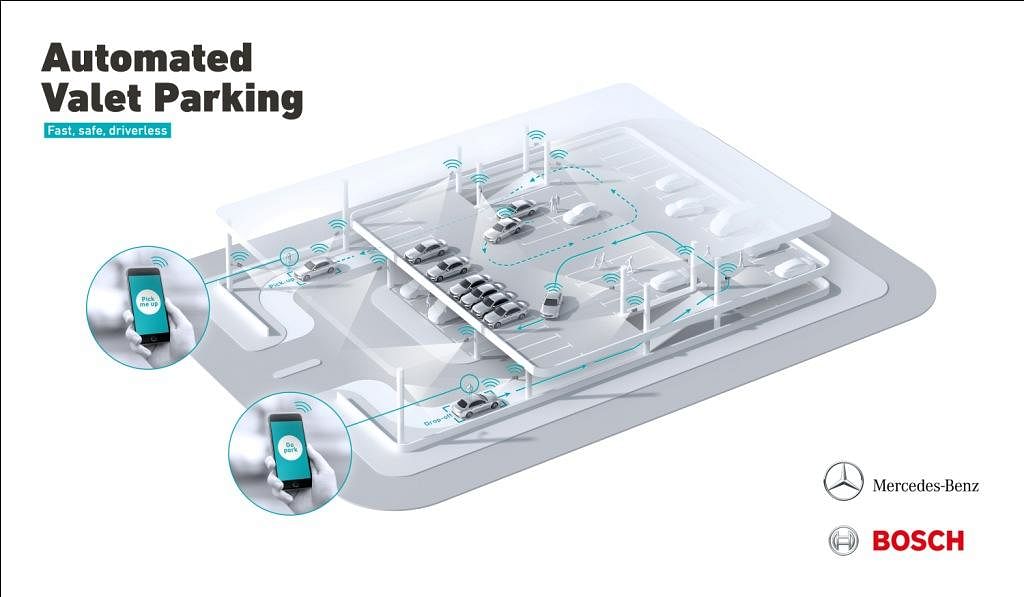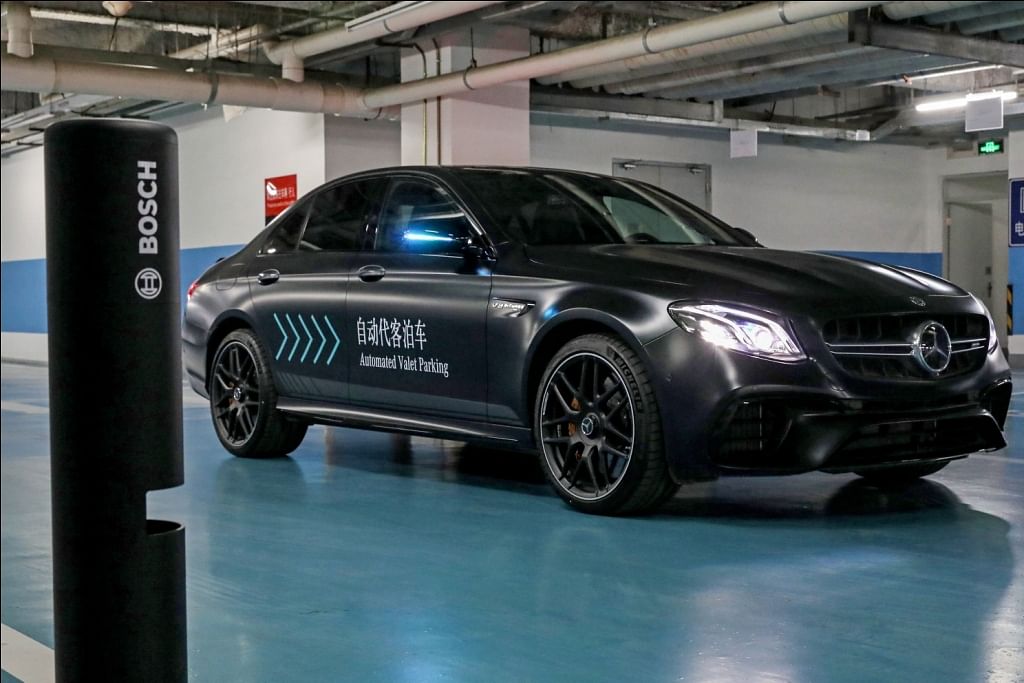Bosch and Daimler get SAE Level 4 autonomous parking system approval
The automated valet parking service accessed via a smartphone app requires no safety driver.
German technology major Bosch and automotive major Daimler have claimed a milestone on their path to automated driving. The partners have now obtained approval from the relevant authorities in Baden-Wurttemberg for their automated parking system in the Mercedes-Benz Museum parking garage in Stuttgart, Germany.
The automated valet parking service accessed via a smartphone app requires no safety driver, which the two company say makes it the world’s first fully automated driverless SAE Level 4 parking function to be officially approved for everyday use.
Commenting on the same, Dr. Markus Heyn, member of the board of management, Robert Bosch, said: “This decision by the authorities shows that innovations like automated valet parking are possible in Germany first. Driverless driving and parking are important building blocks for tomorrow’s mobility. The automated parking system shows just how far we have already progressed along this development path."
Dr. Michael Hafner, head of drive technologies and automated driving at Daimler said:, "This approval from the Baden-Wurttemberg authorities sets a precedent for obtaining approval in the future for the parking service in parking garages around the world. As a pioneer in automated driving, our project paves the way for automated valet parking to go into mass production in the future.”
Bosch supplies infrastructure, Daimler vehicle technology

From the very beginning, Bosch and Daimler’s top priority for the driverless parking service was safety. As there is as yet no official approval process for automated driving functions that do not require a driver, the authorities – the Stuttgart regional administrative authority and the state of Baden-Wurttemberg’s transportation ministry – oversaw the project along with experts from the German technical inspection service TUV Rheinland from the outset.
Their aim was to assess the operating safety of the automotive and parking-garage technology. The result was a comprehensive safety concept with appropriate testing and approval criteria that can be applied beyond this pilot project. The concept saw the developers define how the driverless vehicle detects pedestrians and other cars in its path and reliably comes to a halt when it encounters an obstacle. They also set up secure communications between all system components and took steps to ensure the reliable activation of the parking manoeuvres.
A car user can simply drive in to the parking garage, get out, and send the car to a parking space just by tapping on a smartphone screen – automated valet parking has no need for a driver. Once the driver has left the parking garage to go about their business, the car drives itself to an assigned space and parks. Later, the car returns to the drop-off point in exactly the same way.
This process relies on the interplay between the intelligent parking garage infrastructure supplied by Bosch and Mercedes-Benz automotive technology. Bosch sensors in the parking garage monitor the driving corridor and its surroundings and provide the information needed to guide the vehicle. The technology in the car converts the commands from the infrastructure into driving manoeuvres. This way, cars can even drive themselves up and down ramps to move between stories in the parking garage. If the infrastructure sensors detect an obstacle, the vehicle stops immediately.

Automated driverless tech since 2015
Bosch and Daimler started developing fully automated driverless parking in 2015, and in 2017, their pilot solution in the Mercedes-Benz Museum parking garage in Stuttgart reached an important milestone: automated valet parking in real conditions, with and without drivers at the wheel, was presented to the public for the first time.
This premiere was followed by an intensive testing and start-up phase, which begin in 2018 allowed museum visitors to use the parking service live, accompanied by a trained safety personnel, and share their experience. One aspect of the pilot project involved testing lighting concepts on the vehicles. Turquoise lighting indicates that a vehicle is in automated driving mode and informs passers-by and other road users that the vehicle is driving itself. The insights from these tests are reflected in the recently issued SAE standard 3134. Obtaining final approval from the authorities is a further major milestone for Bosch and Daimler. The two companies say that soon, interested parties will be able to experience the innovative valet parking service live in daily operation in the Mercedes-Benz Museum parking garage without additional supervision from a safety driver.
Also read: Mercedes-Benz India sells 6,561 units in first-half 2019, down 18.6%
Bosch opens smart manufacturing plant at Bidadi
Daimler India CV's BharatBenz 5528TT heavy-duty truck gets BS VI certification
RELATED ARTICLES
Skoda begins sale of made-in-India CKD Kushaq in Vietnam
Before production started, pre-series Kushaq vehicles covered over 330,000 kilometres on a variety of Vietnamese roads a...
Six Japanese companies join forces to expand use of recycled materials in new vehicles
Denso, Toray Industries, Nomura Research Institute, Honda Motor, Matec Inc and Rever Corporation have set up the BlueReb...
BYD selects Voestalpine as steel supplier for its Hungarian plant
The announcement of the Austrian steelmaker as a supplier demonstrates BYD’s strategic plan to source from high-quality,...





 By Autocar Professional Bureau
By Autocar Professional Bureau
 23 Jul 2019
23 Jul 2019
 7715 Views
7715 Views
















